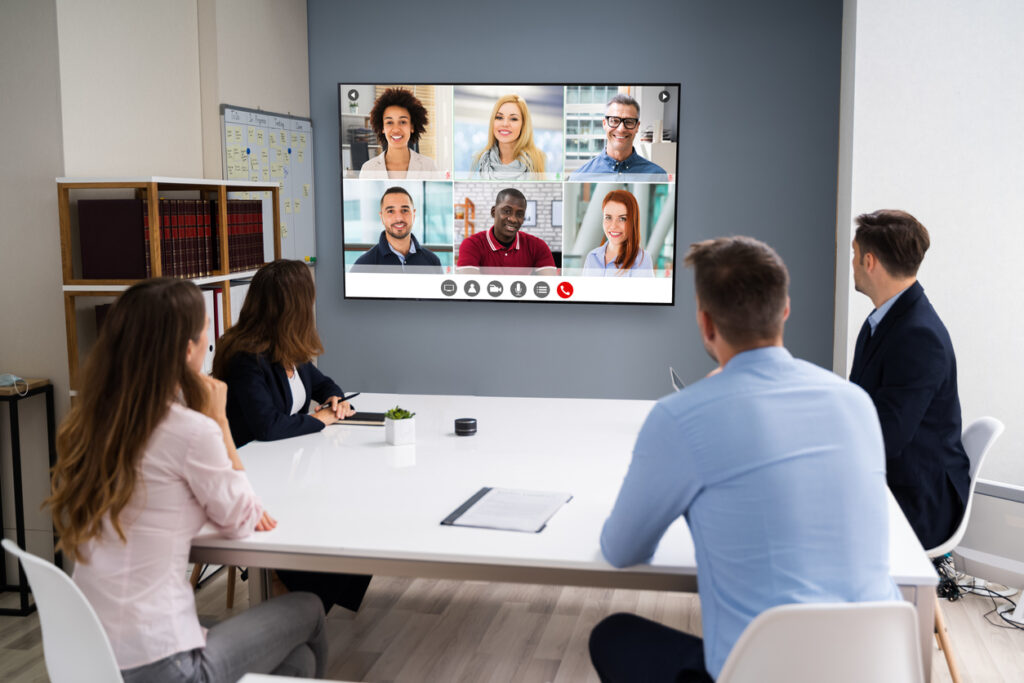Some colleagues and I are working on joint venture called Realise Your Future, which has three phases to it:
- Re-imagine
- Reconnect
- Realise
Thinking about these words made me wonder how this might apply to learning and development. In L&D it feels like everything has changed – and yet nothing has changed. Given the tumultuous 18 months we’ve all just had, it seems like a good idea to re-imagine what we are doing to ensure that it’s still fit-for-purpose. We now have the opportunity to reflect on the learning methods that we’re using. As we adopt new ways of operating in our organisations, we are more easily able to create programmes that use a range of methods to achieve our desired learning outcomes.
As part of this, we need to reconnect with our purpose. It’s important to make these connections, otherwise we’re at risk of behaving being drawn to ‘bright shiny objects’ without really considering how useful they are.
It’s good to ask yourself some questions on a regular basis:
- Why do we do what we do?
- What is the point of learning and development in the workplace?
- What are we using learning interventions to achieve?
I believe that we should all be learning every day and therefore workplace L&D applies at all stages of the employee lifecycle. This potentially means that we have a range of purposes, including:
- Helping new employees to get up and running as quickly as possible.
- Helping existing employees to learn new systems and processes.
- Developing team members so that they can take on new challenges and new roles.
- Supporting leavers to be ready for their next steps.
Fundamentally, we need to create learning that enables individuals and teams to meet the needs of the organisation, both now and in the future. We know this to be true, there’s nothing new here. What is interesting to me, however, is whether we always remember the purpose of our learning interventions, or do we simply get caught up in the latest tool and idea? Or, on the flip side, do we carry on doing what we’ve always done, just because we’ve always done it?
Finding purpose
With this in mind, I hope that the following list of questions might help us to reconnect with our purpose so that we can realise the outcomes that we seek:
- Through this learning intervention, what are we trying to achieve?
- What will be different when the learners put their learning into practice?
- To what extent can one and two be achieved via a learning intervention or
a) Might we need to consider changing processes and systems?
b) Might we need to consider allocating more/different resources to individuals and teams?
- How will we measure whether the learning has been put into practice?
Once we are crystal clear on our purpose and desired outcomes, we then move on to our learning methods.
Hybrid learning methods
Since 2020 our delivery methods have radically shifted into the virtual space. Some of the learning that has taken place has been a seemingly simple move of what was delivered face-to-face is now delivered in a Zoom or Teams meeting room (a conversation about the appropriateness of this is probably one for another time). Some of the learning has been much more tailored to the virtual world. Now, we’re talking about hybrid learning to fit in with hybrid working.
These are some of the things that have struck me as I reflected on making the best use of all our available learning methods:
- We can now provide shorter, more targeted learning because creating virtual learning experiences (live or recorded) is within the realm of possibility for anyone with a smartphone.
- We can cultivate and encourage self-directed learning because most individuals will now reach for a device when they have a question to ask or problem to solve: e.g. ‘let’s Google it’ or ‘watch this YouTube video’.
- We can support managers to develop their coaching and mentoring skills so that, in turn, they can support their team members to put learning into practice.
- We can provide face-to-face learning experiences that focus on providing a space for practical application, skills development and reflection (rather than sharing theory and knowledge).
- We can use a range of accessible tools to help us not only uncover learning needs, but also measure the difference that learning is making to individual, team and organisational performance.
A key theme that I notice here is that, just maybe, the playing field is levelling and we have the chance to provide learning opportunities for all our team members – not just those who can attend a training course on a certain day in a certain venue.
As we use a range of different learning methods, we will be able to truly create learning organisations that encourage all team members to keep on learning, growing and developing, and that can only be a good thing for us all.
Interested in this topic? Read How effective is your learning culture in the hybrid world of work?
Some colleagues and I are working on joint venture called Realise Your Future, which has three phases to it:
- Re-imagine
- Reconnect
- Realise
Thinking about these words made me wonder how this might apply to learning and development. In L&D it feels like everything has changed – and yet nothing has changed. Given the tumultuous 18 months we’ve all just had, it seems like a good idea to re-imagine what we are doing to ensure that it’s still fit-for-purpose. We now have the opportunity to reflect on the learning methods that we’re using. As we adopt new ways of operating in our organisations, we are more easily able to create programmes that use a range of methods to achieve our desired learning outcomes.
As part of this, we need to reconnect with our purpose. It’s important to make these connections, otherwise we’re at risk of behaving being drawn to ‘bright shiny objects’ without really considering how useful they are.
It’s good to ask yourself some questions on a regular basis:
- Why do we do what we do?
- What is the point of learning and development in the workplace?
- What are we using learning interventions to achieve?
I believe that we should all be learning every day and therefore workplace L&D applies at all stages of the employee lifecycle. This potentially means that we have a range of purposes, including:
- Helping new employees to get up and running as quickly as possible.
- Helping existing employees to learn new systems and processes.
- Developing team members so that they can take on new challenges and new roles.
- Supporting leavers to be ready for their next steps.
Fundamentally, we need to create learning that enables individuals and teams to meet the needs of the organisation, both now and in the future. We know this to be true, there’s nothing new here. What is interesting to me, however, is whether we always remember the purpose of our learning interventions, or do we simply get caught up in the latest tool and idea? Or, on the flip side, do we carry on doing what we’ve always done, just because we’ve always done it?
Finding purpose
With this in mind, I hope that the following list of questions might help us to reconnect with our purpose so that we can realise the outcomes that we seek:
- Through this learning intervention, what are we trying to achieve?
- What will be different when the learners put their learning into practice?
- To what extent can one and two be achieved via a learning intervention or
a) Might we need to consider changing processes and systems?
b) Might we need to consider allocating more/different resources to individuals and teams?
- How will we measure whether the learning has been put into practice?
Once we are crystal clear on our purpose and desired outcomes, we then move on to our learning methods.
Hybrid learning methods
Since 2020 our delivery methods have radically shifted into the virtual space. Some of the learning that has taken place has been a seemingly simple move of what was delivered face-to-face is now delivered in a Zoom or Teams meeting room (a conversation about the appropriateness of this is probably one for another time). Some of the learning has been much more tailored to the virtual world. Now, we’re talking about hybrid learning to fit in with hybrid working.
These are some of the things that have struck me as I reflected on making the best use of all our available learning methods:
- We can now provide shorter, more targeted learning because creating virtual learning experiences (live or recorded) is within the realm of possibility for anyone with a smartphone.
- We can cultivate and encourage self-directed learning because most individuals will now reach for a device when they have a question to ask or problem to solve: e.g. ‘let’s Google it’ or ‘watch this YouTube video’.
- We can support managers to develop their coaching and mentoring skills so that, in turn, they can support their team members to put learning into practice.
- We can provide face-to-face learning experiences that focus on providing a space for practical application, skills development and reflection (rather than sharing theory and knowledge).
- We can use a range of accessible tools to help us not only uncover learning needs, but also measure the difference that learning is making to individual, team and organisational performance.
A key theme that I notice here is that, just maybe, the playing field is levelling and we have the chance to provide learning opportunities for all our team members – not just those who can attend a training course on a certain day in a certain venue.
As we use a range of different learning methods, we will be able to truly create learning organisations that encourage all team members to keep on learning, growing and developing, and that can only be a good thing for us all.
Interested in this topic? Read How effective is your learning culture in the hybrid world of work?









